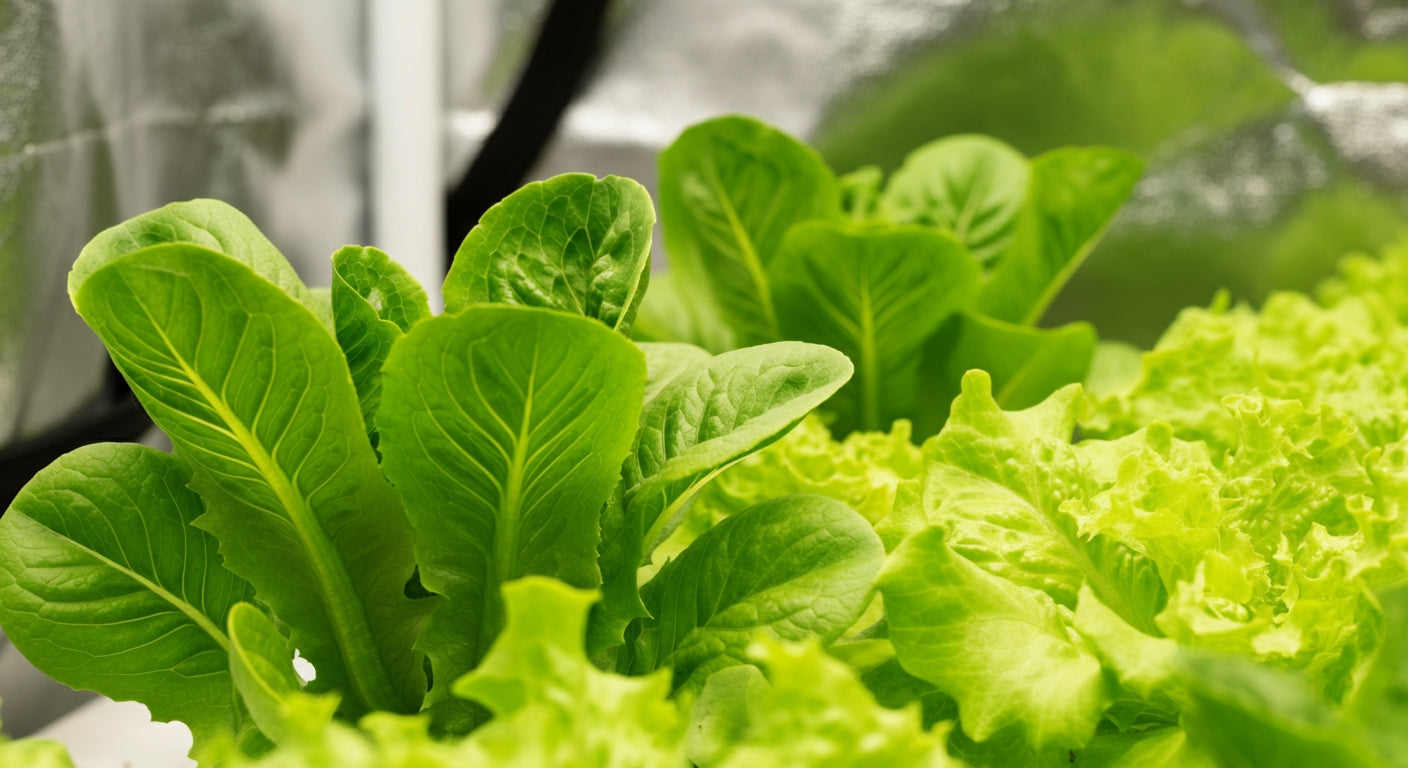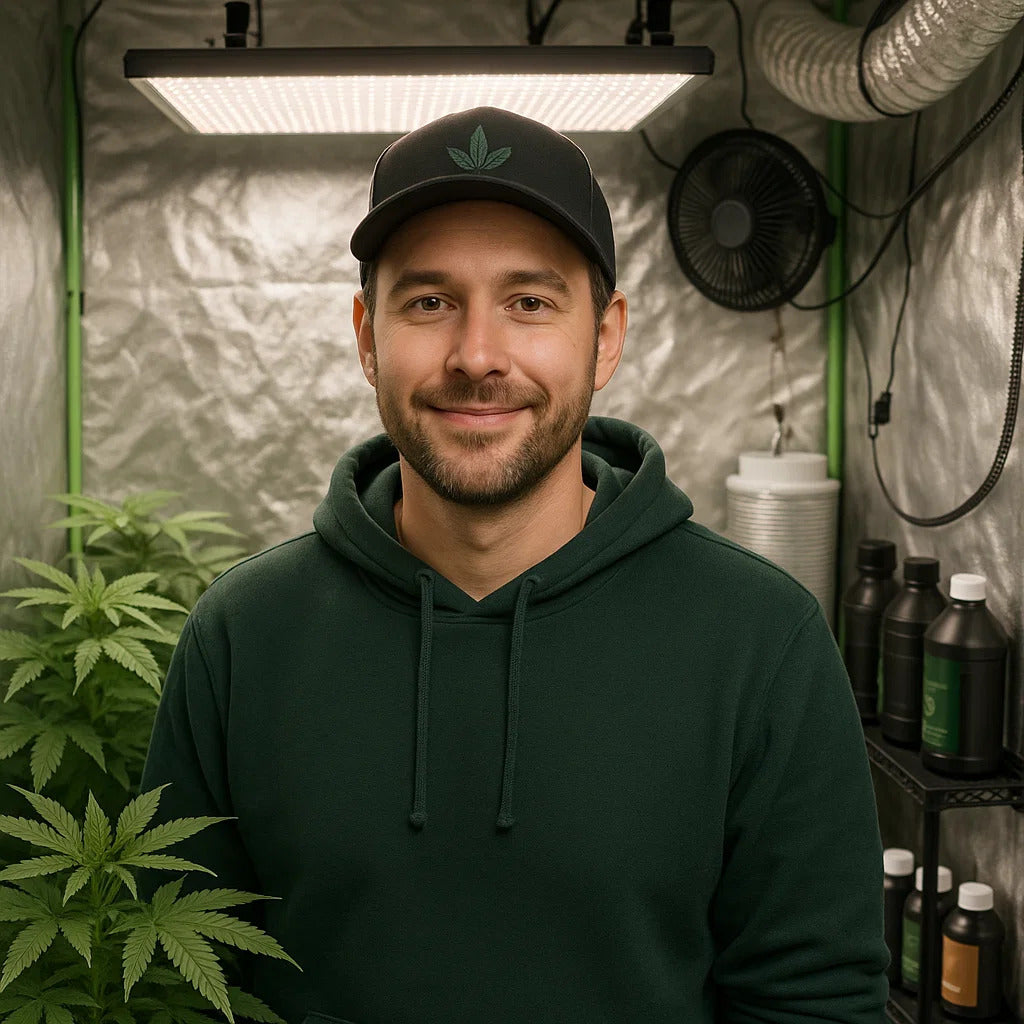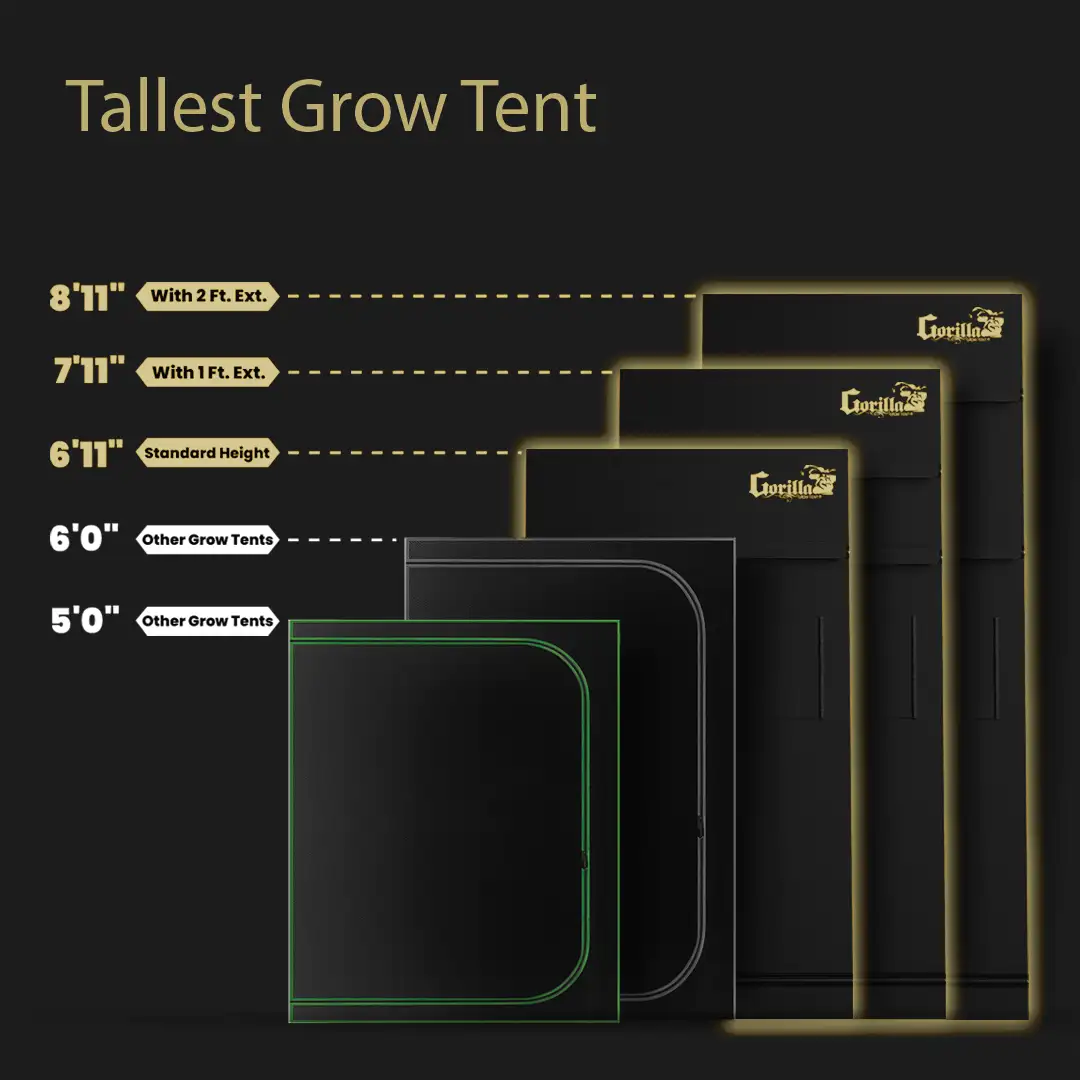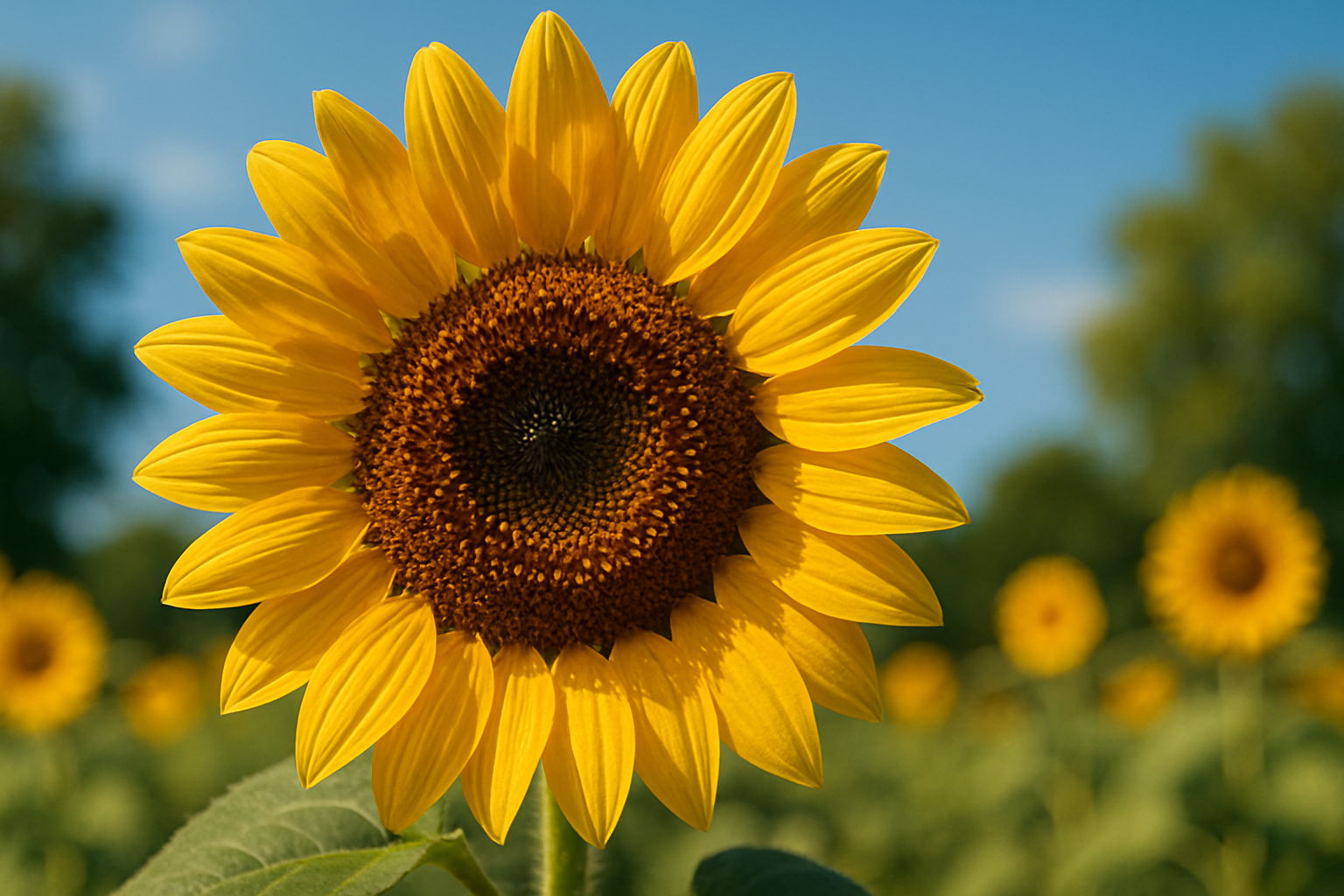
Benefits of Starting a Hydroponic Garden: Why Soil-Free Growing Is the Future
Thinking about starting a hydroponic garden but not sure if it's worth the investment? You're about to discover why millions of growers worldwide are ditching traditional soil and embracing this revolutionary growing method. Hydroponics isn't just a trend—it's a proven system that delivers faster growth, bigger yields, and more control than conventional gardening ever could.
Whether you're growing fresh lettuce for daily salads, cultivating year-round tomatoes, or experimenting with exotic herbs, hydroponic systems transform the growing experience from unpredictable to reliably productive. The benefits extend far beyond just plant health—you'll save water, eliminate pests, maximize limited space, and enjoy harvests even in the dead of winter.
This comprehensive guide explores every advantage of hydroponic gardening, from the obvious perks like accelerated growth to surprising benefits like reduced environmental impact and improved nutritional content. By the end, you'll understand exactly why hydroponics represents the future of home food production and how to get started with your own system.
What Is Hydroponic Gardening?
Before diving into benefits, let's clarify what makes hydroponics unique. Hydroponic gardening grows plants in nutrient-rich water solutions instead of soil. Plant roots either suspend directly in oxygenated water or rest in inert growing media like clay pebbles, rockwool, or coconut coir that supports the plant while water delivers nutrition.
This soil-free approach isn't new—scientists have used hydroponic principles since the 1600s, but modern technology has made systems affordable and accessible for home growers. Today's hydroponic growing systems range from simple Deep Water Culture setups to sophisticated Ebb and Flow systems that automate virtually everything.
The core principle remains constant: deliver exactly what plants need—water, nutrients, oxygen—directly to roots without forcing them to search through soil. This efficiency unlocks remarkable advantages that traditional gardening simply cannot match.

Benefit #1: Dramatically Faster Growth Rates
The most immediately noticeable advantage? Hydroponically grown plants mature 30-50% faster than soil-grown counterparts. Reports from growers using systems like the SuperPonics 16 consistently show growth accelerated up to 5 times faster than traditional methods.
This speed boost happens because roots access nutrients directly instead of searching through soil. In traditional gardening, plants expend enormous energy developing extensive root systems to find water and nutrition. Hydroponic plants redirect that energy toward above-ground growth—producing leaves, stems, flowers, and fruits faster.
Why Speed Matters
Faster growth means more harvests per year. A lettuce crop that takes 60 days in soil matures in 30-40 days hydroponically. That's potentially 9 harvests annually versus 6 from soil—a 50% increase in productivity from the same space. For hydroponic strawberries, you can achieve first harvests in just 60-90 days and maintain continuous production year-round.
Commercial growers base entire business models on this speed advantage, and home growers benefit equally. Whether you're producing food for your family or supplying a local restaurant, faster crops mean more frequent fresh harvests and better return on your time investment.
Benefit #2: Significantly Increased Yields
Speed isn't the only metric that improves—total yield increases substantially. Hydroponic bucket systems report yields up to 5 times larger than traditional growing methods, and studies consistently show 25-30% higher production even in modest home systems.
Multiple factors contribute to these impressive numbers. Direct nutrient delivery means every plant receives optimal nutrition constantly, eliminating the nutrient competition that occurs in soil. Hydroponic systems also enable higher planting densities—you can fit more plants in less space when you're not accounting for soil volume and root spread.
Maximizing Production in Limited Space
The SuperPonics 8 demonstrates this perfectly: eight full-size plants in a compact footprint that would struggle to support three or four soil plants. Scale up to the 32-site Super Flow system, and you're running a serious production operation in a single grow tent.
For home growers with limited balcony or indoor space, these yield increases transform feasibility. What seemed impossible in soil—growing enough vegetables to meaningfully reduce grocery bills—becomes realistic with hydroponics.

Benefit #3: Massive Water Conservation
Counter to intuition, hydroponic gardens use 70-90% less water than traditional soil gardens. How? Water in hydroponic systems recirculates rather than draining away or evaporating from exposed soil. What plants don't consume returns to the reservoir for reuse.
In soil gardening, you apply water to the surface, and most disappears—absorbed by soil particles, evaporated by sun and wind, or drained beyond root reach. Estimates suggest only 10-15% of irrigation water actually benefits plants in traditional gardens. The rest wastes.
Environmental and Economic Impact
This efficiency matters enormously in water-scarce regions or drought-prone climates. It also reduces water bills for indoor growers. A 20-site Ebb and Flow system might use 35 gallons total—refilled as needed—while soil-growing equivalent plants could consume hundreds of gallons monthly.
Beyond personal savings, widespread hydroponic adoption addresses broader agricultural water challenges. As global water scarcity intensifies, growing methods that achieve more with less become increasingly critical. Starting your hydroponic garden today contributes to sustainable food production practices.
Benefit #4: Year-Round Growing Independence
Forget seasonal limitations. Indoor hydroponic gardens produce fresh vegetables, herbs, and fruits 365 days per year regardless of outdoor weather. January blizzard outside? Your tomatoes don't care. Summer heat wave? Your lettuce stays crisp and productive.
This consistency transforms food production from seasonal activity to reliable system. Plan your harvests around your needs rather than adapting to nature's schedule. Want fresh basil for Christmas dinner? No problem. Strawberries in February? Absolutely.
Food Security and Self-Sufficiency
Year-round growing provides genuine food security. Supply chain disruptions, price spikes, and availability issues in stores become less concerning when you're producing your own. The complete grow tent setup combined with hydroponics creates a personal food production system that operates independently of external factors.
This independence extends beyond emergencies. You control variety selection, growing methods, and harvest timing. Want heirloom tomatoes that disappeared from stores decades ago? Grow them hydroponically. Prefer organic methods? You control every input.
Benefit #5: Superior Pest and Disease Control
Soil harbors countless pests and pathogens—fungus gnats, root aphids, nematodes, bacterial infections, fungal diseases. Eliminating soil removes these problems' primary habitat. While hydroponic systems aren't immune to all issues, pest pressure reduces dramatically.
Root diseases particularly decrease in properly managed hydroponic setups. Oxygenated water prevents the anaerobic conditions where root rot thrives. Clean, sterile growing media eliminates soil-borne pathogens entirely. Combined with the controlled environment of a Gorilla Grow Tent, pest problems become rare rather than inevitable.
Reduced Chemical Use
Fewer pests mean less pesticide application—or none at all. Many hydroponic growers operate completely pesticide-free, producing genuinely clean food. When issues do arise, enclosed systems make targeted treatment easier and more effective than outdoor application.
This cleanliness appeals strongly to health-conscious growers. You know exactly what touched your food (nothing but clean water and pure nutrients) because you controlled every variable from seed to harvest.
Benefit #6: Precise Nutrient Control
Hydroponics gives you complete control over plant nutrition. Mix your nutrient solution to exact specifications for each growth stage, crop type, or even individual plant preference. This precision enables optimization impossible in soil.
Soil nutrition remains mysterious even for experienced gardeners. What's in your soil? How much of each nutrient? What's available to plants versus locked up in unavailable forms? Soil tests help, but they're snapshots—conditions change continuously.
Optimized Plant Health
Hydroponic systems make nutrition transparent. Measure your reservoir's nutrient strength (EC/PPM) and pH instantly. Adjust immediately when plants need more food or when values drift. This real-time control prevents deficiencies before symptoms appear and eliminates toxicities from over-fertilization.
The result? Healthier plants that reach genetic potential consistently. You're not guessing or compensating for soil unknowns—you're providing exactly what plants need, when they need it. Learn more about this in our guide to growing hydroponic plants.
Benefit #7: Space Efficiency for Urban Growing
Hydroponics maximizes production from minimal footprint—critical for urban dwellers with limited space. Systems stack vertically, pack densely, and eliminate the space waste of soil-filled containers and in-ground beds.
A 4x4 grow tent with hydroponic system produces more food than many backyard soil gardens. Apartment balconies accommodate productive setups. Basement corners transform into year-round vegetable production centers.
Vertical Growing Possibilities
Advanced growers utilize vertical space with stacked systems or tower gardens, multiplying production per square foot. While vertical soil gardening proves challenging (heavy, messy, difficult to water), hydroponic vertical systems operate cleanly and efficiently.
This space efficiency makes home food production accessible to millions who thought their living situations prevented gardening. If you have closet space, you have room for a productive hydroponic garden.
Benefit #8: Cleaner Growing Process
Hydroponic gardening eliminates the mess associated with traditional growing. No soil means no dirt under fingernails, muddy floors, or bags of potting mix stacked in corners. Systems operate cleanly even indoors near living spaces.
Water stays contained in reservoirs and channels—spills are rare and easily cleaned. Compare this to watering potted plants where excess drains through, requiring saucers and creating wet spots. Or outdoor gardening where mud, compost, and amendments make everything dirty.
Indoor-Friendly Growing
This cleanliness makes hydroponics perfect for indoor growing in finished spaces. Run systems in spare bedrooms, basements, or climate-controlled garages without creating the environmental impact of soil gardening. Your indoor grow room stays professional and organized rather than looking like a construction site.
For those who've avoided indoor gardening due to mess concerns, hydroponics removes that barrier entirely. It's gardening that respects your living space.
Benefit #9: Improved Nutritional Content
Studies show hydroponically grown produce often contains higher levels of vitamins, minerals, and beneficial compounds compared to soil-grown counterparts. The controlled nutrition and optimal growing conditions allow plants to focus energy on producing nutritious fruits and vegetables rather than survival strategies.
Fresh-harvested hydroponic vegetables reach your plate within minutes or hours rather than the days or weeks typical of store-bought produce. This freshness preserves nutrient content that degrades during transportation and storage. Your hydroponic lettuce contains more vitamins than anything available at grocery stores.
Know Your Food Source
Complete control over inputs means you know exactly what's in your food. No mystery pesticides, questionable fertilizers, or contamination from polluted soil or water. If you want organic growing, use organic hydroponic nutrients. If you want to eliminate specific compounds, simply don't add them.
This transparency provides peace of mind increasingly difficult to find in commercial food systems. You become your own food safety inspector with complete knowledge and control.
Benefit #10: Educational and Therapeutic Value
Starting a hydroponic garden offers profound educational benefits for children and adults alike. Watching plants grow from seed to harvest in transparent systems reveals processes usually hidden in soil. Understanding plant biology, chemistry, and environmental science becomes hands-on rather than abstract.
For families, hydroponic gardens create engaging projects everyone can participate in. Children learn responsibility through plant care while seeing direct results from their efforts. The fast growth and visible progress maintain interest better than slow traditional gardens.
Mental Health and Well-being
Growing plants provides documented therapeutic benefits—reduced stress, improved mood, sense of accomplishment. Hydroponic gardens amplify these effects through consistent success and year-round engagement. Unlike outdoor gardens limited to growing season, your hydroponic setup provides daily interaction and continuous harvests that maintain connection and satisfaction.
For those recovering from illness, dealing with limited mobility, or seeking productive indoor hobbies, hydroponics offers fulfilling activity accessible regardless of weather or physical capabilities.
Getting Started: Choosing Your First Hydroponic System
Ready to experience these benefits yourself? Starting is simpler than you might think. Several system types suit different experience levels, space constraints, and growing goals.
Beginner-Friendly Systems
The SuperPonics 8 offers an excellent entry point—plug-and-play simplicity with proven performance. This Deep Water Culture system accommodates 8 plants and includes everything needed to start growing immediately. Just add water, nutrients, plants, and light.
For slightly larger production, the SuperPonics 16 doubles capacity while maintaining beginner-friendly operation. Both systems report 5x faster growth than traditional methods and handle hundreds of harvests with proper care.
Intermediate and Advanced Options
Experienced growers often prefer Ebb and Flow systems like the 20-site or 32-site Super Flow systems. These combine multiple hydroponic techniques for maximum efficiency and can grow plants up to 5 feet tall—perfect for tomatoes, peppers, and other large crops.
The hydroponic bucket system works beautifully for growing fewer large plants with generous root space. Its 6.6-gallon capacity ensures plants never experience restriction while promoting explosive growth.
Essential Supporting Equipment
Regardless of system choice, you'll need:
- Quality grow lights: LED technology provides efficiency and spectrum control
- Proper ventilation: Maintain temperature and humidity with inline fans
- Environmental monitoring: Track conditions with temperature and humidity sensors
- pH and nutrient meters: Maintain optimal ranges for plant health
- A quality grow tent: Gorilla Grow Tents provide controlled environments perfect for hydroponics
Our comprehensive guide on setting up hydroponic growing systems walks through every component and connection.
Common Hydroponic Misconceptions Addressed
Despite proven benefits, misconceptions about hydroponics persist. Let's clear up the most common myths.
"Hydroponics is too complicated for beginners"
Modern systems are designed for simplicity. Many include timers, automated feeding, and clear instructions. If you can follow a recipe, you can run a hydroponic system. Start with beginner-friendly options and expand as you gain confidence.
"Hydroponic vegetables taste worse than soil-grown"
The opposite is typically true. Optimal nutrition and stress-free growing produce superior flavor. Hydroponic tomatoes often taste better than store-bought because you can choose flavor-focused varieties and harvest at peak ripeness.
"It's too expensive to start"
Startup costs range from $200-500 for basic systems including lights and tent—comparable to quality outdoor garden setup. Operating costs are minimal (nutrients, electricity) and offset by reduced grocery bills and zero food waste from spoilage.
"Hydroponics uses harmful chemicals"
Hydroponic nutrients are pure mineral salts—the same elements plants extract from soil. Many certified-organic hydroponic nutrients exist. You control exactly what enters your system, making hydroponics potentially cleaner than soil growing.
FAQ: Starting Your Hydroponic Garden
Q: What plants grow best in hydroponic systems?
A: Leafy greens (lettuce, spinach, kale), herbs (basil, cilantro, mint), and vegetables like tomatoes, peppers, and cucumbers excel hydroponically. Strawberries produce exceptional results. Root vegetables (carrots, potatoes) work but are less common. Start with fast-growing greens or herbs to build confidence, then expand to fruiting plants. For specific guidance, see our article on best plants for grow tents.
Q: How much does it cost to start a hydroponic garden?
A: Basic setups start around $200-300 for a small DWC system without lighting. Complete beginner systems with tent, lights, and ventilation run $400-800. Larger systems like the 20-site Ebb and Flow cost $600-900 initially. Monthly operating costs (nutrients, electricity) typically run $20-50 depending on scale. Most growers recoup costs within 3-6 months through reduced grocery bills.
Q: Is hydroponic gardening difficult to maintain?
A: Daily maintenance takes 5-15 minutes checking water levels, pH, and plant health. Weekly tasks include topping off reservoirs and adjusting nutrients (15-30 minutes). Monthly cleaning and system maintenance require 1-2 hours. Modern systems automate much of this—timers control watering, and smart sensors monitor conditions constantly. It's less daily work than traditional gardens since there's no weeding, tilling, or dealing with weather issues.
Q: Can I grow organic food with hydroponics?
A: Yes! Certified-organic hydroponic nutrients are widely available. While USDA organic certification for hydroponics remains debated, you can absolutely follow organic principles—using plant-based nutrients, avoiding synthetic pesticides, and growing sustainably. Many growers consider their hydroponic operations "beyond organic" since they eliminate soil contamination risks entirely while using minimal inputs.
Q: What's the best hydroponic system for beginners?
A: Deep Water Culture systems like the SuperPonics 8 offer the simplest starting point. They have fewer components than other systems, making troubleshooting easy and maintenance straightforward. Alternatively, hydroponic grow kits that bundle everything needed eliminate guesswork entirely. Start small with 4-8 plants, master the basics, then scale up.
Quick Takeaway: Featured Snippet Summary
Hydroponic gardens grow plants 30-50% faster than soil with 25-30% higher yields while using 70-90% less water. Benefits include year-round growing, reduced pests, precise nutrient control, space efficiency, and cleaner operation. Systems range from simple $200 beginner setups to advanced multi-site systems. Hydroponics produces fresher, more nutritious food with complete control over growing conditions, making it ideal for urban growers, food security, and sustainable production.
Start Growing Smarter Today
The benefits of hydroponic gardening speak for themselves: faster growth, bigger yields, year-round production, water conservation, reduced pests, and complete control over your food production. Whether you're motivated by environmental concerns, food security, space limitations, or simply the joy of growing, hydroponics delivers results that traditional gardening cannot match.
Starting your hydroponic journey doesn't require extensive experience or massive investment. Quality systems like the SuperPonics series make getting started straightforward, while Gorilla Grow Tents provide the controlled environment where hydroponics truly shines.
Every day you wait is another day without fresh, homegrown produce. Every month you delay is another harvest cycle missed. The investment you make today—in equipment, knowledge, and time—returns dividends for years as you enjoy unlimited access to fresh, nutritious food grown exactly the way you want.
Browse our complete selection of hydroponic systems and grow tent kits to find the perfect setup for your space and goals. Need guidance? Our comprehensive hydroponic growing guides cover everything from system selection to harvest techniques.
The future of food production is soil-free, water-efficient, and incredibly productive. Start growing stronger, smarter, and more sustainably today!

Lena Myles
I'm a mushroom enthusiast and home cook based in Oregon. I'm passionate about foraging and creating fungi-focused recipes, especially delicious, plant-based dishes using gourmet mushrooms like trumpet, shiitake, and oyster. When I’m not in the kitchen, you’ll usually find me wandering the woods in search of new wild flavors.


